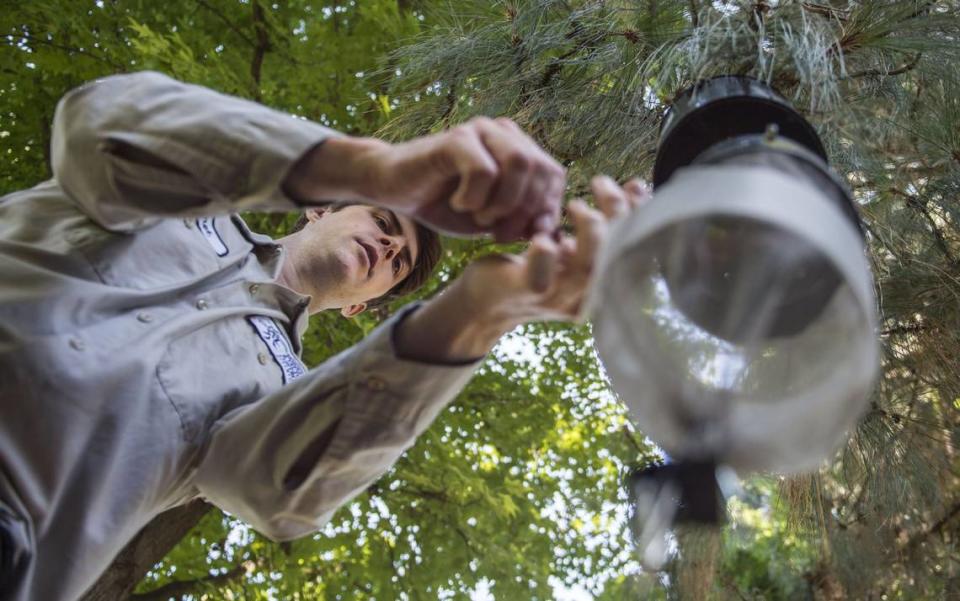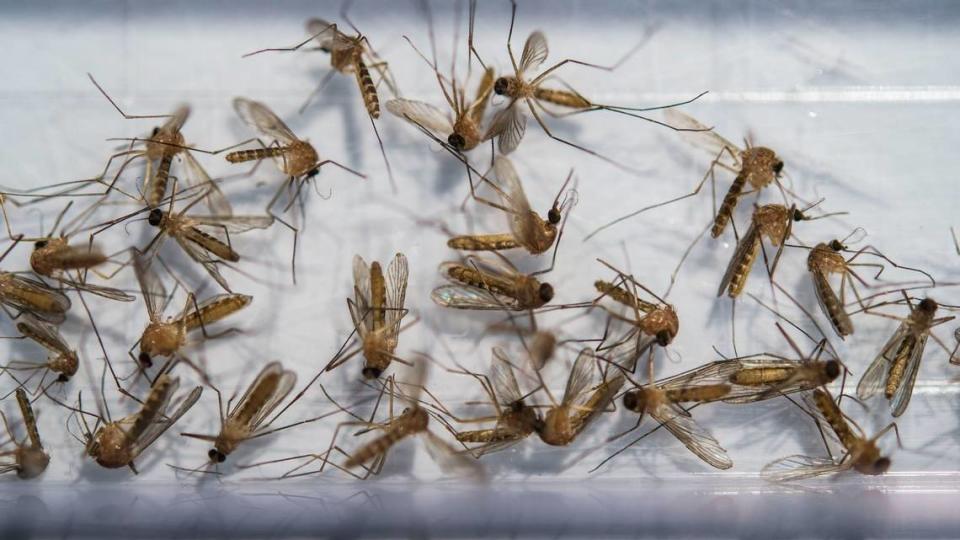Mosquitoes are out and ‘aggressively biting’ in Sacramento. What’s being done to stop them?
Humans haven’t been the only ones enjoying the warm weather in the capitol city.
Mosquito activity has increased in Sacramento following a series of
storms that poured down over the region during the past month.
Luz Maria Robles, Sacramento-Yolo Mosquito and Vector Control District spokeswoman, told The Sacramento Bee in early February that the weather is a big factor in the uptick of mosquito activity.
During the previous winter, record rains kept the biting bugs dormant and more people stayed indoors, The Bee reported.
Warmer weather this winter brought the mosquitoes out of hibernation. Meanwhile, people have been spending more time outside, so they’ve been more likely to notice the annoying insects.
A reader reached out to The Bee about the trend, writing, “With all the rain and standing water, I anticipate lots of mosquitoes.”They also asked how the local government will address the bugs.

How bad are mosquitoes right now in Sacramento?
The increase in mosquito activity is normal, according to Gary Goodman, manager of the Sacramento-Yolo Mosquito and Vector Control District.
“These mosquitoes are ones that had been hibernating during the past few months,” Goodman said in a Jan. 30 news release. “The warm temperatures have brought them out of resting and they are aggressively biting.”
The district received 142 requests for service in January, compared to 20 in January 2023, Robles told The Bee.
It wasn’t clear as of midday Monday how many service requests the district had received so far in February.

Is there a risk of West Nile disease?
Goodman said that the mosquitoes recently spotted in the Sacramento area are not the same species pose a threat for West Nile virus, a common disease spread by mosquito bites.
The main species of mosquitoes in the United States that carry the virus are Culex pipiens, Culex tarsalis, and Culex quinquefasciatus.
“These mosquitoes can get West Nile Virus by feeding on the blood of a bird that is infected with (it) and then spread the virus to humans or other animals the next time they bite,” Ronald Owens, a spokesman for the California Department of Public Health, told The Bee in June.
In 2023, Sacramento County reported 51 cases of West Nile virus, two of which resulted in death, according to the California Department of Health. Yolo County reported 45 cases of the virus during the same time period, three of which resulted in death.
How are Sacramento, Yolo counties keeping bug populations down?
The Sacramento-Yolo Mosquito and Vector Control District has crews that look and assess areas for mosquito breeding, according to the news release.
The district serves Sacramento and Yolo counties, an area that spans more than 2,013 square miles and includes the cities of Sacramento, West Sacramento, Woodland, Davis and Elk Grove.
The district often sprays treatments in areas that have virus activity in the counties, using urban aerial spraying and ground spraying. It also regularly sprays agricultural areas, such as pastures and fields.
Products used range from adulticides — chemicals that reduce adult mosquito populations — to larvicides, which target mosquitoes developing in the water, according to the district’s website.
“All products are registered with the California Environmental Protection Agency and are applied by trained and state-certified technicians,” the website said.
According to the website, no treatments are currently scheduled as of Monday.
You can stay updated on when the district plans to conduct aerial spraying over urban areas — which typically happens in the summer — by texting “sprayupdate” to 69922 or signing up for the mailing list.
How can I prevent mosquito bites?
The district advises people to wear long sleeves and pants when outdoors to avoid bug bites.
Officials also recommend using a mosquito repellent that has DEET, Picaridin or lemon eucalyptus oil in it.
The district also has a list of best practices for preventing mosquitos:
Drain standing water that may produce mosquitoes.
Dawn and dusk are times to avoid being outdoors.
Dress appropriately by wearing long sleeves and pants when outside.
Defend yourself by using an effective insect repellent. Make sure to follow label directions!
Door and window screens should be in good working condition.
District personnel are also available to address any mosquito problems. Call 1-800-429-1022 or visit FightTheBite.net
You can also call the district if you’d like a home inspection, to report breeding grounds or if the bugs are bothering you.
What do you want to know about life in Sacramento? Ask our service journalism team your top-of-mind questions in the module below or email servicejournalists@sacbee.com.

